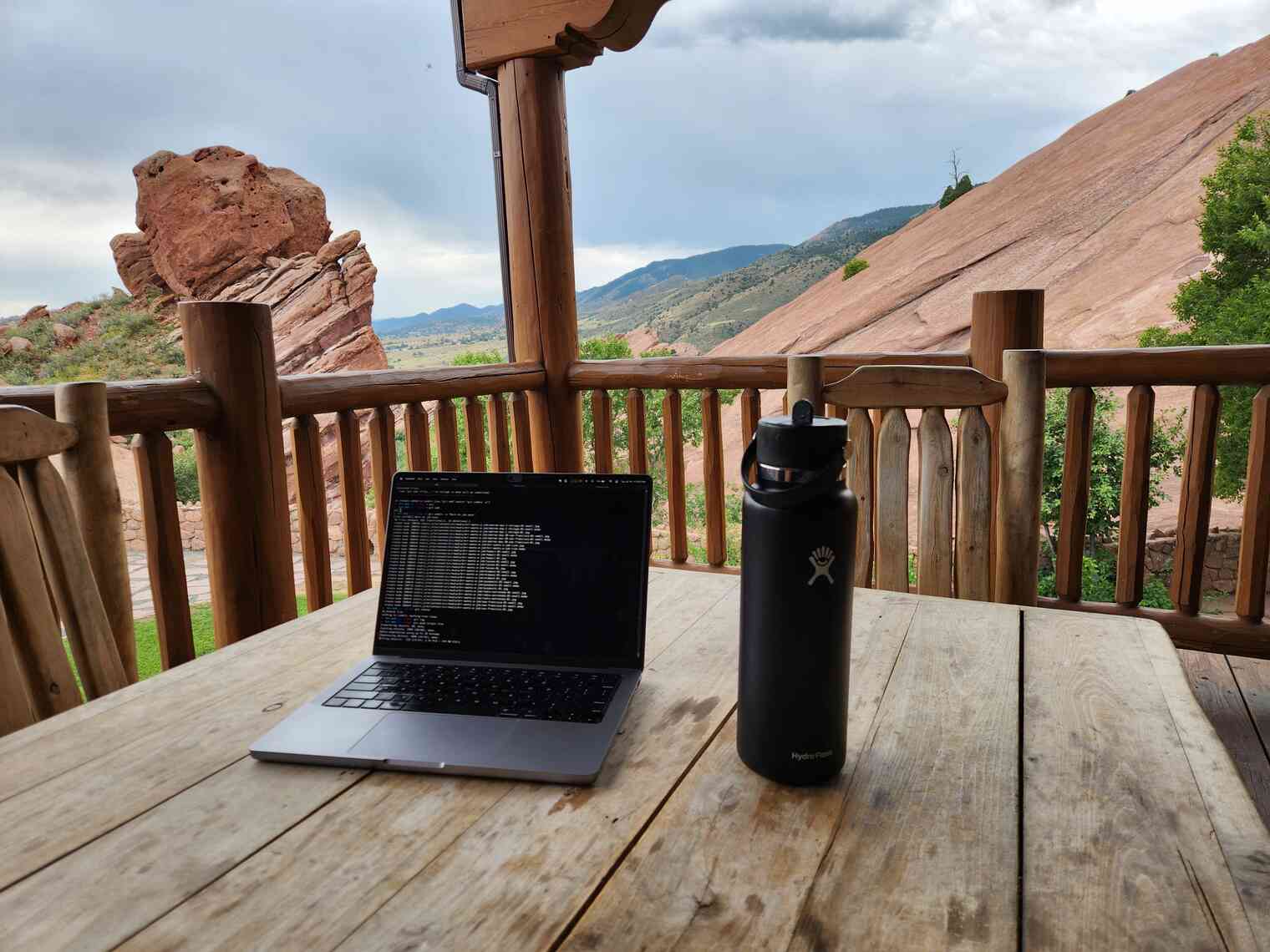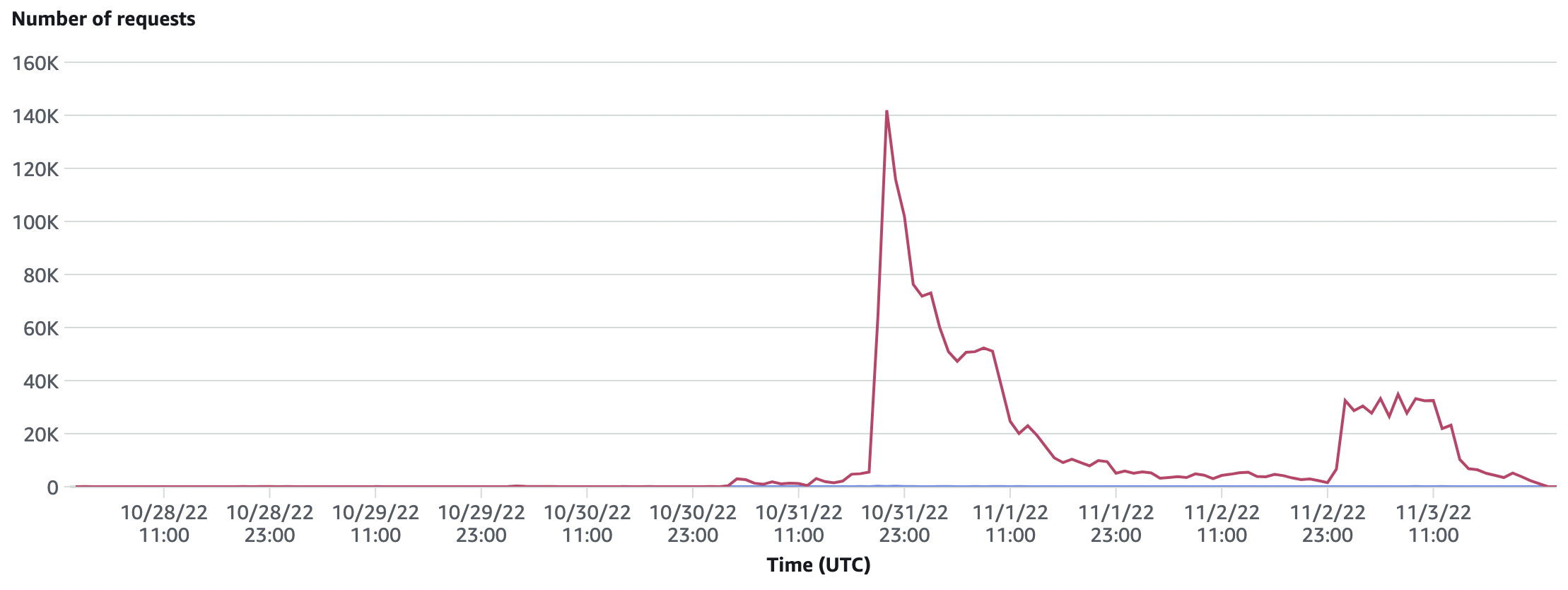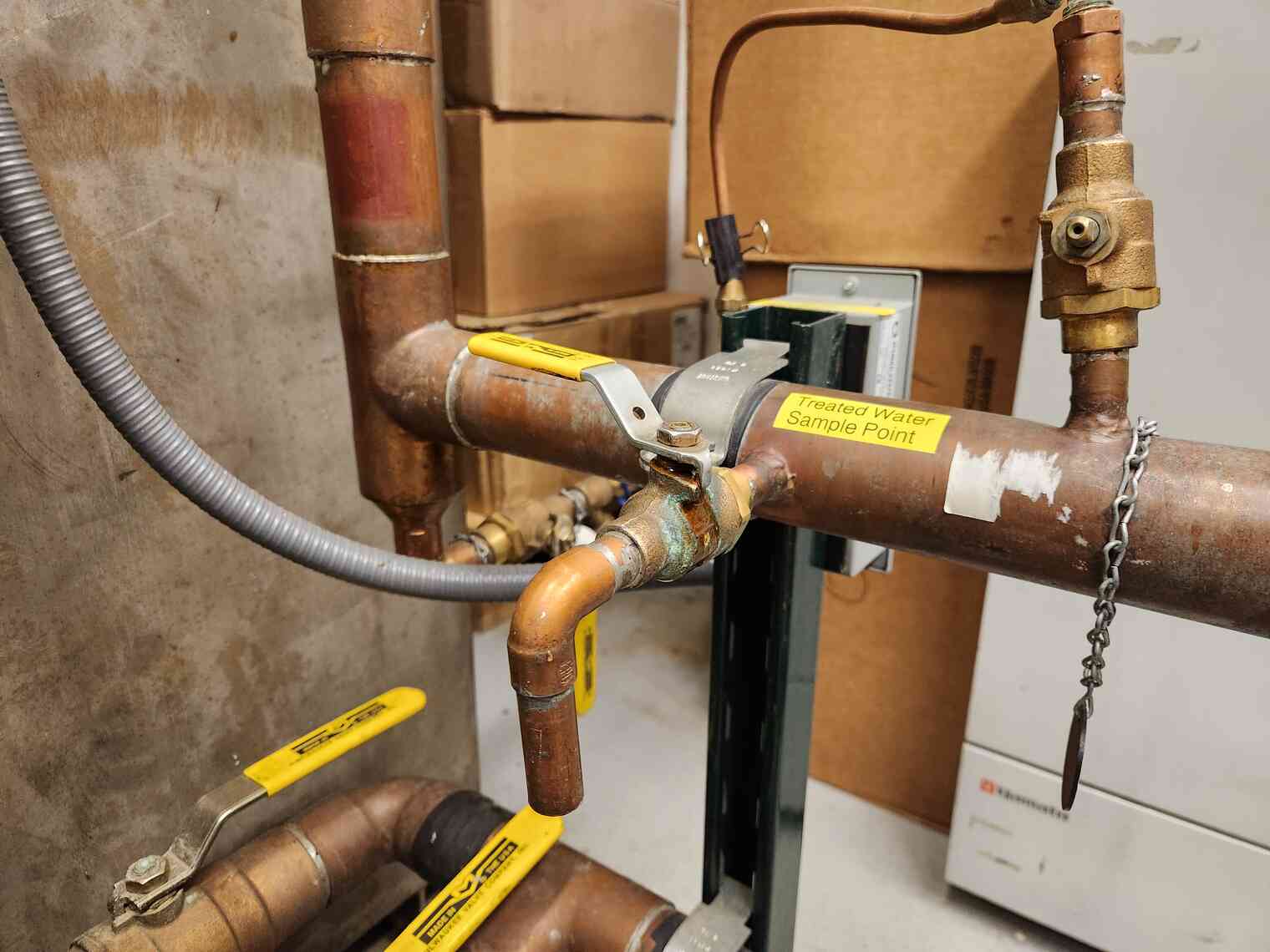Hello brr readers!
It’s been an absolute delight keeping in touch with y’all during my ~8 months post-Antarctica.
I’ve connected with folks all over the world – at remote outposts, on ships, at other Antarctic (and Arctic!) stations, and in all sorts of fascinating life circumstances. People have shared their stories, asked insightful questions, and compared notes about remote infrastructure, itinerant “gig” work, and the vastness of human experience.
Now, it’s time for me to commit to something new, build connections in a new place, and find new things to work on that bring me joy and fulfillment.
Maybe some of you can help!
Edit: As of October 2024, I’m gainfully employed!
tl;dr: Please reach out to me if you know of work opportunities, remote, in the San Francisco Bay Area,
or in Denver, that I might enjoy, as a mid-career IT and infrastructure generalist with an interest
in clean energy and electrical grids. Also, separate from work and jobs, I’d love to meet
people while I’m here in the Denver area!
You can reach me via email at hello@brr.fyi.
Thanks!!
Table of contents
What I’ve been up to
In the 8 months since leaving the South Pole in November 2023, I’ve done a fair bit of exploring, and a bit of short-term contract IT work.
After returning from my post-ice vacation in New Zealand, I visited friends and family in the US Midwest, then took the meandering route back to San Francisco using an Amtrak USA Rail Pass: 10 rail segments, 30 days, and a great way to see the United States.
I spent a few months doing a fixed-term IT contract with some friends, at a radio astronomy observatory in rural Northern California. We got to witness the auroras caused by the May 2024 solar storms.
And finally – I decided to spend a few months in the Denver Metro Area, where I’m writing this post.
And that brings us to now. It’s time for me to get a job. Based on my past communications with brr readers, I think some of you might have ideas or recommendations.
Who I am
When I started this blog, for my friends and family, I was “anonymous” only on paper. Sure, the blog didn’t give away my identity, but people who I knew in real life were well aware that I was running it. I was writing for an audience of just a handful of people. Anonymity was just a technical feature, one that I chose to implement for fun. It wasn’t something that I felt strongly about.
But in late October / early November 2022, shortly after I wrote about The McMurdo Wastewater Treatment Plant, I noticed that brr had been picked up by a handful of online message boards. There’s no stopping Internet momentum once it starts.
It was fun to discover that there was an audience hungry for this type of writing, but it was also terrifying to realize that every word I wrote, from then on, would be combed over and scrutinized by Internet strangers. I knew this to be true, because I watched it happen, in real time, across message boards.
I have a distinct memory of sitting in the Crary IT office in McMurdo, on a Sunday afternoon, feeling a mix of shock and horror as thousands of Internet strangers read my post. I remember reading along as dozens of commenters picked apart the technical minutiae of wastewater treatment processing across online message boards.
I combed through my posts over and over, trying to reassure myself that I hadn’t gotten anything factually wrong, disclosed any restricted information, or otherwise made any mistakes that would stick out with this newfound attention.
At this point, I decided to 1.) lean into the momentum and continue writing, 2.) be precise and careful, 3.) tailor my writing to my newly-expanded audience, and 4.) commit to staying anonymous.
And the blog continued to grow in popularity. When I published Last Flight Out in February 2023, I surpassed 1TB of monthly CloudFront egress for the first time, as tens of thousands of people around the world read about how we prepared South Pole Station for the long winter.
When I published Engineering for Slow Internet in late May 2024, I found myself at the top of Hacker News for the day, and the post received about 200,000 non-bot pageviews in the first 48 hours.
Throughout this adventure, anonymity was a helpful tool, and I was glad I had built it in from the start. Anonymity kept the focus on my experience in Antarctica. It allowed Antarctic Infrastructure to stay front and center, just as I had originally intended. It helped me, my colleagues, and my back-home friends stay out of a personal spotlight that none of us had signed up for.
Antarctica is vast, and the people who work there have a variety of opinions about a variety of topics. I was extremely wary of thrusting any person, team, or project into the spotlight. Some people explicitly cultivate real-name publicity associated with their time in Antarctica; others recoil in horror at the slightest risk of being Perceived™.
Some “ice people” love that the brr blog took off the way it did, and they believe it’s a wholesome and good-natured way to share a love of infrastructure with fellow enthusiasts around the world. Others are baffled that thousands of Internet strangers care about wastewater treatment at all.
Still others find the tone of this blog to be off-putting, either because they believe that nothing should be said in public at all, or because they believe I have drastically mis-represented the day-to-day experience of working within the program. This is an entirely valid critique, and it’s one that I fully accept.
Brr is primarily an infrastructure blog. If you are interested in the United States Antarctic Program in more detail, I recommend reading Nicholas Johnson’s Big Dead Place. I have done so, and it resonates strongly with me. Johnson cared deeply about Antarctica, and I appreciate that he was willing to write candidly about its shortcomings. I can’t recommend this book highly enough if you’re interested in getting a more holistic picture about the day-to-day sociological context of Antarctic contract work. Johnson wrote about this topic more eloquently than I could ever hope to accomplish. His insights are as valid today as they were in 2005.
Anonymity was also helpful due to my status as a worker on the United States Antarctic Program’s Antarctic Support Contract. For the firms that administer these large contracts, one aspect of the job is to keep an eye on staff members’ social media activity. This is especially true for contracts associated with subjects of high public interest such as Antarctica.
Nothing in my employment contract prohibited me from maintaining this blog, as long as I complied with the relevant policies. But – I’m sure that some folks at Leidos and the NSF Office of Polar Programs were monitoring this blog, because I know with certainty that they were monitoring (and, in some cases, actively intervening with) colleagues’ social media.
For people inside the Antarctic program, it would have been trivial to work out who I was. For example, just the two datapoints “flew to McMurdo on August 28, 2022” and “flew to Pole on December 15, 2022” are enough for anyone with access to the flight manifests to narrow it down to just me.
Staying officially anonymous sent a signal that I wasn’t live-blogging my experience for real-world professional gain while I was still employed in Antarctica. This is a big no-no according to the policies. This was also one of the reasons I turned down higher-profile inquiries, such as newspapers or documentaries.
But now that I’m 1.) no longer in Antarctica, 2.) a healthy 8 months removed from the experience, and 3.) starting to look for non-Antarctica things to do next, I don’t feel that anonymity is necessary or helpful anymore.
Brr is the only thing I’ve ever written on the Internet, and it grew beyond my expectations. You’ve all been so kind, and I’ve truly enjoyed every connection, however small, that I’ve been able to make with fascinating people around the world.
Hi – my name is Paul Coldren, and it has been quite an adventure keeping this blog anonymously for the past 2 years.

So, now that I’m a Real Person™️ instead of an anonymous blogger, I’d like some help finding a new project to work on. Thanks in advance!
Help me find a job
Edit: As of October 2024, I’m gainfully employed!
I’ve always been interested in infrastructure and systems. Working at the South Pole was a fantastic way to see a bunch of this up close.
I’m not just referring to technological infrastructure (how exactly do you run server infrastructure at the South Pole?). I’m also referring to organizational infrastructure. I got to see the ins and outs of government employment, contracting, procurement, supply chains, budgeting, and military logistics.
I also got to meet a bunch of new people, and I got to explore the world of itinerant, gig-chasing contract work. This was all new to me, and I found it all to be fascinating and fulfilling.
For this next phase, I’d like to try establishing a home base, finding a community, and working on something new.
For the rest of this post, I’ll be describing my skills and interests. My hope is that brr readers who are hiring or are aware of openings will reach out.
What I’m good at
I come from a high tech background. I have a computer science degree, and just over a decade of experience doing a variety of high tech work.
I’ve worked at FAANG and FAANG-adjacent megacorps, tiny 10-person startups, and everything in between. I’ve worked on software applications, consumer electronics, and business hardware products. My 14 months in Antarctica gave me exposure to the world of regulated government engineering. I spent approximately two years as a self-employed IT and infrastructure consultant. I’ve worked in individual contributor and tech lead roles.
My expertise these days is primarily as an IT engineering and infrastructure engineering generalist. That being said, go back about ~8 years, and my job title was “Senior Software Test Engineer”. So – there is some pure software experience in there.
In Antarctica, they called me “Senior Systems Administrator, South Pole Station”. Prior to that, I’ve worn a variety of hats, including “IT Director”, “Senior Infrastructure Engineer”, “IT Engineering Consultant”, and “Senior Software Test Engineer”.
I work best in a high-trust environment, where I’m accountable for an outcome instead of a series of predetermined steps. I’m a systems thinker, and I feel most at home when I’m bringing order, robustness, determinism, and risk characterization to an ad-hoc system. I’m precise and detail-oriented, when such traits are warranted for the task at hand. I enjoy working on resilience engineering, contingency planning, workflow automation, and monitoring projects.
For example, from day one, I’ll think about building and securing out-of-band administrative access for important services. I’ll be the one documenting service owners, runbooks, and recovery playbooks. Or, depending on risk tolerance, I’ll be the one at least explicitly document our decision to defer building these items.
I’m also the person who grabs the RJ45 crimper “just in case”. I’m the person who remembers to photograph the inside of the junction box, before we seal it up and stuff it back in the attic. I’m the person who maintains the wiki page listing all our vendor contacts.
What I’m looking for
I’m passionate about physical, civil infrastructure, so I’m hoping my next role will be tangible. I’m interested in working on a team and in a role where I routinely interact with tangible facets of our built environment.
I am especially interested in clean energy, electrification, and power grid engineering. Some of my past jobs have been on grid analytics, electric vehicle charging infrastructure, and battery engineering. I’d love to continue working in this field.
As a hobby, I hold an ABYC marine electrical certification, and I’ve built small-scale solar + storage energy projects for off-grid installations.
I’m particularly interested in solar, wind, and hydro developers. Grid resiliency engineering companies. Home and commercial electrification companies. Anything where I can help push the industry forward, get more renewable energy online, build a robust electrical grid, and electrify everything.
I’m also interested in Internet accessibility and reliability. I spend time with the FCC Broadband map and the RIPE Atlas portal for fun, and in past jobs I’ve worked on connectivity tools and services.
I’m mostly interested in IT and infrastructure roles. I am qualified, but not particularly interested, in pure software roles. I did those for the first ~5 years of my career, before beginning to transition over more to the IT and infrastructure side.
Is your growing company hiring its first IT Administrator? Are you looking for someone to handle your 50+ SaaS applications, identity challenges, office IT, compliance, and corporate hardware management tasks? Let’s talk.
Do you have a fleet of systems, services, and workloads, running in an onprem, cloud, or hybrid environment, and you need a competent Systems Administrator generalist to help tame the chaos? Let’s talk.
Is your growing engineering team facing engineering workflow, testing, staging, productionization, or monitoring challenges? Are you looking for a competent Infrastructure Engineer? Let’s talk.
And of course, as a wildcard – do you work on something that someone who geeks out about Antarctic Infrastructure might enjoy, even if it doesn’t neatly fall into one of the above categories? Let’s talk!
Again, I’m Paul Coldren, and you can find relevant professional information about me on LinkedIn. You can reach me via email at hello@brr.fyi.
Also, I’m interested in socializing and meeting new people in Denver! I’d love to meet up with brr readers in the area. I need to find groups for lap swimming and day hikes. And, of course, I’ll need to get connected with local Denver infrastructure enthusiasts… wastewater treatment plant tour, anyone?
Thank you for your help!
–Paul



